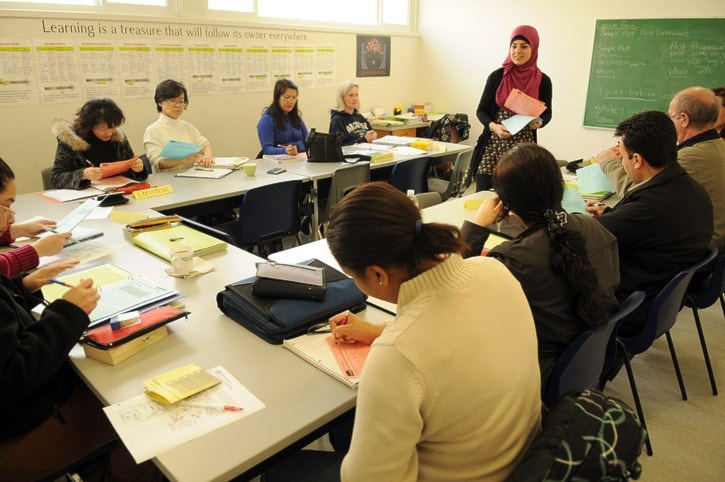At first blush, immigration has not changed the face of Chilliwack all that much.We seem to remain the “country” community with a soft industrial base providing jobs that allows us a measure of self-containment.But when the B.C. government announced a $116,000 grant last November to deliver English language instruction to immigrants and refugees in the Chilliwack area, The Progress decided to take a closer look at the immigration picture.Over the next several weeks, The Progress will publish a series about immigration, with the aim of giving readers an inside look at the immigrant experience. It might also serve as a reminder that in fact we are all immigrants here, as any of the first inhabitants - the Sto:lo - can tell you.We invite anyone with a compelling story about their immigration experience to contact us.But our findings to date already suggest that we are on the verge of some exciting changes, of becoming a multi-cultural community that retains the best of the “old” and cultivates the “new” with its breath-taking diversity of cultures from around the world.Unlike other Lower Mainland communities where “pockets” of specific immigrant groups have grown up, Chilliwack currently has “new arrivals” from 38 different countries speaking 24 different languages.Exact numbers are hard to come by, but there’s no doubt the immigrant population is growing here – albeit not as fast as the non-immigrant population.The 2006 census says there are 9,640 immigrants in Chilliwack or about 14 per cent of the total 69,217 population. In 1986 there were 7,475 immigrants, but they made up 18 per cent of a smaller total population.“The biggest source of new arrivals isn’t immigrants, but in-migration,” says Chilliwack Mayor Sharon Gaetz. “People moving from within B.C. to Chilliwack.”Coming here for all the reasons everyone else does: lower housing costs, recreational opportunities and jobs.“Part of what people tell us, it’s the mountains, Cultus Lake, the opportunity to go hiking and then, of course, we’ve created quite a few jobs,” Gaetz says.Chilliwack farmers and greenhouse operators are also hiring migratory workers on temporary visas as the local economy remains robust.However, the spirit of Chilliwack itself, a community well-known for its friendliness, must also be part of the attraction.“I like the community spirit you have here, I feel I belong,” declares Peggy Fridriksdottir, an “entrepenureal” immigrant from Iceland, whose story of moving here as a single mother of three will be told later in the series.Now an immigration consultant, Fridriksdottir is promoting Chilliwack as an “arrival city” for business-class immigrants, and simplifying the immigration process to get them here and “fast-tracked” to create jobs for everyone.Chilliwack Community Services, where most new arrivals make first contact, is a beehive of activity on any given day, providing English language instruction, settlement services, job coaching and special programs for seniors and youth.“We are the go-to place for immigrant services in Chilliwack,” says April Neave, director of immigrant services at CCS.About 600 new arrivals this year are taking part in the six programs delivered at CCS funded by about $470,000 the B.C. government provides each year in partnership with the federal government.Why is the provincial government so keen on immigration?Because government planners say there won’t be enough skilled workers in the resident population to fill the one million job openings expected in the province by 2019.“As we expect only 650,000 people to graduate from university and college at that same time, we have quite a dependency on skilled workers and immigration,” a spokesperson for B.C. Ministry of Regional Economic and Skills Development told The Progress.Immigration is seen as a major source of skilled workers to help fill labour shortages with “a permanent, reliable and stable work force,” the spokesperson says.Mayor Gaetz agrees the immigrant workforce is “industrious and hardworking” and brings added value to the community - above and beyond economics.“Their values enhance the ones we already have,” she says. “They aren’t afraid of hard work, they’re highly motivated and highly educated with a sense of community and inclusiveness.”And for Gaetz personally, they add “a profound sense of thankfulness for where we get to live” and “a heightened sense of responsibility to other parts of the world.”In short, immigrants connect Chilliwack to the world and their cultures make us better citizens of the global village.“The challenge for the community is to integrate (the new arrivals) and not just have pods through-out the community,” the mayor says. “There’s value in having people of every background in one place.”In Chilliwack, the top five countries of origin for immigrants are China, Korea, Iran, Romania and Germany. But they also hail from Asia, Russia, Central and South America.Imagine yourself arriving in any of those countries, not knowing the language, not knowing the customs, without a job or a roof over your head and you’ll get an idea of the challenges immigrants face.The 16 staff and “a host of volunteers” at CCS try to ease the transition, starting with English language instruction, and then with help finding housing and employment.There are also special programs and “mentors” for seniors and youth to make sure they “connect” with the community and form friendships so they don’t become isolated.More volunteers are always needed at CCS to provide the ideal one-on-one help for new arrivals, but Neave says everyone in Chilliwack can help by simply showing patience - and curiosity.“We need to celebrate and respect the diversity that newcomers bring to the community,” she says.“We need to be curious and listen to their stories,” she says. “Every immigrant has an incredible story to tell about their journey to Canada.”
